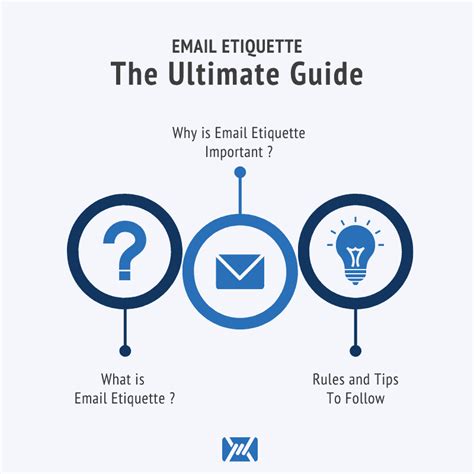Introduction
Email has become an integral part of our daily communication. In the realm of professional communication, it holds significant importance. Mastering the art of composing formal emails in French is essential for establishing credibility and maintaining professional relationships. This guide provides a comprehensive overview of French email etiquette, ensuring you craft emails that convey the right message with elegance and precision.

Formal Greetings
In the Salutation:
-
Formal:
- Bonjour, [Name] (Dear Mr./Ms. Last Name)
- Cher(e) [Name] (Dear Mr./Ms. First Name)
-
Less Formal:
- Salut, [Name] (Hi Mr./Ms. Last Name)
- Coucou, [Name] (Hi Mr./Ms. First Name)
In the Body of the Email:
-
Formal:
- Veuillez agréer, [Name] (Sincerely, Mr./Ms. Last Name)
- Je vous prie d’agréer, [Name] (With best regards, Mr./Ms. Last Name)
-
Less Formal:
- Cordialement, [Name] (Best regards, Mr./Ms. Last Name)
- Amicalement, [Name] (Friendly regards, Mr./Ms. Last Name)
Subject Line
- Keep it concise and informative.
- Use keywords to clearly indicate the email’s purpose.
- Avoid using vague or generic phrases.
Email Structure
Opening Paragraph:
- Introduce yourself and state your purpose.
- Express gratitude or acknowledge previous correspondence.
- Set the context for your email.
Body Paragraphs:
- Clearly outline the points you want to convey.
- Use formal language and avoid slang or abbreviations.
- Use subheadings or line breaks to enhance readability.
Closing Paragraph:
- Summarize the main points of your email.
- State any next steps or expected actions.
- Express your appreciation or offer assistance.
Formatting
- Use a legible font.
- Maintain consistent margins and line spacing.
- Use bullet points or numbered lists to present information clearly.
- Proofread your email carefully for errors.
Common Mistakes to Avoid
- Translating directly from English to French, which can lead to unnatural language.
- Using informal language or colloquialisms.
- Making grammatical errors.
- Sending emails with large attachments without prior notice.
- Using unclear or ambiguous subject lines.
FAQs
1. When should I use “vous” (formal pronoun) and “tu” (informal pronoun)?
– Use “vous” for formal correspondence with colleagues, clients, and superiors.
– Use “tu” only in very informal situations or with close friends and family.
2. How should I address a group in an email?
– Use “Messieurs et Mesdames” (Gentlemen and Ladies) or “Chers collègues” (Dear colleagues).
3. Is it appropriate to use emojis in professional emails?
– Avoid using emojis in formal emails. They can come across as unprofessional and informal.
4. What is a good way to follow up on an email?
– Send a polite reminder email after a few days without a response.
– Use a subject line that clearly indicates it’s a follow-up.
– Be respectful of the recipient’s time.
5. What should I do if I make a mistake in an email?
– If you notice a mistake in a sent email, apologize in a follow-up email and correct the error.
– If the mistake is significant, consider recalling the email if possible.
6. How can I improve my French email writing skills?
– Practice writing emails regularly.
– Read native French emails to learn from their style and structure.
– Use online resources and dictionaries to improve your vocabulary and grammar.
Creative New Word: “Frangloemailing”
In today’s globalized world, it’s not uncommon to encounter emails that blend French and English elements. We propose the term “Frangloemailing” to describe this phenomenon. By incorporating French phrases or expressions into your emails, you can add a touch of sophistication and cultural awareness.
Tables
Table 1: Salutations
| Level of Formality | Salutation |
|---|---|
| Formal | Bonjour, Monsieur Dupont |
| Less Formal | Salut, Marie |
Table 2: Closing Phrases
| Level of Formality | Closing Phrase |
|---|---|
| Formal | Veuillez agréer, Monsieur Dupont |
| Less Formal | Cordialement, Marie |
Table 3: Subject Line Examples
| Purpose | Example |
|---|---|
| Request a meeting | Demande de rendez-vous |
| Follow up on a project | Suivi du projet “Nom du projet” |
| Order confirmation | Confirmation de commande n°1234 |
Table 4: Common Grammatical Errors
| Incorrect | Correct |
|---|---|
| J’ai parlé à Marie. | J’ai parlé avec Marie. |
| Je n’ai pas vu lui. | Je ne l’ai pas vu. |
| Il est bon à écrire. | Il est bon pour écrire. |
Conclusion
Mastering French email etiquette is a valuable skill that enhances your professional communication. By understanding the nuances of salutations, structure, and formatting, you can craft emails that convey your message effectively and leave a lasting impression. Remember to be respectful, avoid common mistakes, and embrace the creative possibilities of “Frangloemailing.”
May this guide serve as a comprehensive resource for your French email writing endeavors, enabling you to communicate with confidence and professionalism in the global business arena.
